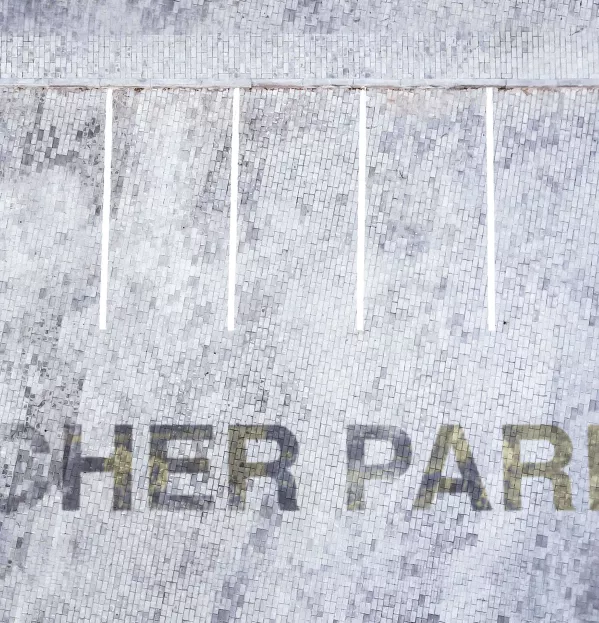Scottish secondary teacher shortages laid bare

We know the secondary teacher shortage is leading to subjects being cut from the curriculum - and secondary schools are having to use non-specialist teachers and primary staff to plug gaps.
That has been flagged by education directors in council areas struggling to staff secondaries, but also by inspection and curriculum development body Education Scotland.
In a recent report, it said “recruitment challenges” were having an impact on the secondary curriculum and limiting students’ options. Recruitment was “particularly challenging” in business, drama, Gaelic, home economics, maths and technologies.
However, while the secondary teacher shortage is much discussed - and has become increasingly problematic over many years - it is rarely quantified.
New insight into teacher shortfalls
Now, Tes Scotland can share fuller insight into the gulf between the teachers needed in secondary schools - and those actually available.
The data - obtained using a freedom of information request - shows that local authorities requested hundreds more secondary probationers to fill posts in 2024-25 than were allocated by the Scottish government through the Teacher Induction Scheme (TIS).
The scheme provides Scottish teaching graduates with a guaranteed one-year post in a school, through which they become fully qualified. It started in 2002 and remains a unique - and oft-praised - feature of Scottish education within the UK. Wales set up a similar scheme during the Covid-19 pandemic to support new teachers, but it was a temporary measure.
The TIS, however, is not immune from criticism, and now the Tes Scotland figures show that, as a source of staff, it is increasingly unreliable. In the secondary sector, councils requested 1,709 secondary probationers for 2024-25 but were allocated 1,121 - a gap of 588 staff.
- Background: Why teacher numbers in Scotland are falling
- Related: Every secondary hit by teacher shortage, says education director
- News: Scottish councils reject requirement to maintain teacher numbers
For context, in 2019-20, Scottish councils requested 1,685 secondary probationers and were allocated 1,515 - meaning that across Scotland 90 per cent of council requests were fulfilled, whereas the 2024-25 figures work out as 66 per cent.
In recent years universities have increasingly struggled to fill places on secondary teacher education programmes. So, while at the beginning of 2018-19, universities reported filling 89 per cent of places on the one-year secondary postgraduate professional graduate diploma in education - the most popular route into secondary teaching in Scotland - that figure dropped to half of places in 2023-24.
The new data shows that, for subjects with well-publicised shortages, such as technological education, computing and maths, shortfalls are particularly acute.
This year, Scotland’s 32 authorities requested 117 technological education probationers but received just 39. Computing had a similar shortage; while 40 places were offered, only 13 probationers arrived in schools. For maths, 164 probationer teachers were requested but 71 were allocated.
Dearth of probationers affecting more subjects
The figures from the General Teaching Council for Scotland, which runs the TIS, also show shortages in subjects where this is a newer phenomenon: councils requested 24 probationers for French, but received eight; business education (108 places, 65 probationers) and English (171 places, 105 probationers) had similar woes.
Some nine councils received less than half the secondary probationers they needed: Aberdeen (requested 97, allocated 48); Aberdeenshire (44; 20); Dumfries and Galloway (44; 20); Inverclyde (35; 16); Moray (44; 19); Perth and Kinross (24; 11); Borders (28; 11); Shetland (10; 4); and South Ayrshire (49; 23).
And in reality, the picture is likely to be considerably worse - as the data dates back to May.
Aberdeenshire Council’s director of education and children’s services, Laurence Findlay, says that although the authority was allocated 20 secondary probationers in May - having requested 44 - just eight started in its secondaries this month.
“This has had a huge impact on our schools and their offer,” he says. “Some of the pull-outs were last minute, so we are starting the new year with vacancies across a number of schools.”

Previously, Findlay has been frank about the challenges Aberdeenshire schools are facing. In November he told Tes Scotland that every secondary was hit by shortages. Soon after, he told the government - after being asked to explain why teacher numbers had fallen in Aberdeenshire - that the authority was “in the midst of a significant recruitment crisis within our secondary sector” and that headteachers were advertising vacancies on multiple occasions” without success.
South Ayrshire Council, similarly, was allocated a fraction of the secondary probationers it could accommodate - 23, having asked for 49 - and by the start of this school year that had fallen to 18.
More unusually, the authority was also allocated far fewer primary probationers than it needed - the figures show South Ayrshire asking for 60 but receiving 46, although only 39 actually started work this month.
Across Scotland, for the 2024-25 school year, councils requested 1,667 primary probationers and were allocated 1,603 - meaning 96 per cent of requests were fulfilled, compared with 66 per cent in the secondary sector.
Different problem for primary sector
In recent years there has been an oversupply of primary teachers, so schools can usually recruit to vacant primary teacher posts. The downside is that primary teachers often cannot find long-term, steady work.
Scottish government figures show that 47.2 per cent of secondary probationers from the TIS in 2022-23 were in permanent posts the September after their probationary year, compared with just 16.6 per cent of primary post-probationers.
South Ayrshire Council says its schools are “appropriately staffed for the beginning of the school session”. But staffing secondary schools is “tougher” than primary - where rolls are falling - says education director and former secondary head Lyndsay McRoberts, with “a real challenge around Stem subjects [science, technology, engineering and maths], business and computing, and in more rural areas”.
Responding to the new figures, the Scottish government points this out: “Councils have statutory obligations in respect of education and should ensure they have the right staffing in place to meet local needs. Councils can also recruit teachers via other means and should not rely on probationers to fill vacancies.”
However, the government also acknowledges “a challenge around the recruitment of teachers in certain geographical areas and in certain subjects” and has committed £145.5 million for councils to protect teacher numbers.
So far, however, councils have refused to sign up to the conditions of this grant, arguing that the pupil-teacher ratio matters more than overall teacher numbers. They want the freedom to take a “holistic” approach to improving outcomes - in other words, they do not want to be tied to spending the money on teachers, “vital” as they are.
However, even if councils do acquiesce, it is hard to see how this funding will improve shortages in specific subject areas: if the teachers don’t exist, schools and councils can’t employ them.
The government said education secretary Jenny Gilruth is working with councils on ways to fix recruitment and retention, with one intervention involving the long-running “preference waiver” scheme, through which probationers agree to be placed at a school anywhere in Scotland for their induction year: the government said greater care is now being taken to allocate preference waiver probationers to the areas of greatest need.
Aberdeenshire, however, was one area targeted for such support - and Findlay stresses that the authority’s challenges are far from resolved. Meanwhile, a spokesperson for the education directors’ body ADES highlights “serious concerns” around teacher supply in a range of subjects, with “a detrimental impact on the ability of schools to offer a broad and varied curriculum to learners in some parts of the country”.
Secondary heads report shortages in range of subjects
Graham Hutton, general secretary of School Leaders Scotland, has canvassed secondary heads about the situation: at the start of the new school year, “many schools” have started without a full staffing complement.
One head reported that their school was six staff short by week two, leaving gaps in PE, biology, maths, business, technology and creative industries; in some subjects, there are simply not enough teachers to go around nationally, “and wins for some schools have been losses for others, as staff move schools”.
Councils are “on a cliff edge with their finances”, says Hutton, making probationers a temptingly less expensive option than teachers further up the pay scale.
EIS teaching union general secretary Andrea Bradley sees “alarming” shortfalls of probationary teachers in numerous subjects. “Many more Scottish secondary schools look set to be starting the new term with hundreds of gaps across subjects like technological education and computing, and even core subjects such as maths and English,” she says.
She adds that it is “very concerning to learn of the extent to which local authorities seem to be dependent on probationer teachers fresh out of initial teacher education institutions to staff their schools”; probationer teachers “require careful support and mentoring” and “should be additional to a school’s staffing complement, rather than a less expensive core part of it”.
Scottish education is “in urgent need of significant investment”, and to attract more graduates into the profession, Bradley believes the government must address pay, conditions and workload.
Scottish teachers were due a salary rise by 1 August, but a pay deal has yet to be reached. Meanwhile, the promised reduction in teachers’ class contact time of 90 minutes a week still looks a distant prospect.
ADES and the Scottish government both talk up the Strategic Board for Teacher Education’s work on teacher recruitment and retention. ADES says this includes “workforce planning and increasing the diversity of the profession, promoting teaching as a valuable career choice and improving the continuum of teacher professional learning from initial teacher education onwards”.
According to Findlay, these are the right priorities - but now it is time, finally, to “get on with it”.
Emma Seith is senior reporter at Tes Scotland. She tweets @Emma_Seith
For the latest in Scottish education delivered directly to your inbox, sign up for Tes’ The Week in Scotland newsletter
Register with Tes and you can read two free articles every month plus you'll have access to our range of award-winning newsletters.
Keep reading with our special offer!
You’ve reached your limit of free articles this month.
- Unlimited access to all Tes magazine content
- Save your favourite articles and gift them to your colleagues
- Exclusive subscriber-only stories
- Over 200,000 archived articles
- Unlimited access to all Tes magazine content
- Save your favourite articles and gift them to your colleagues
- Exclusive subscriber-only stories
- Over 200,000 archived articles



